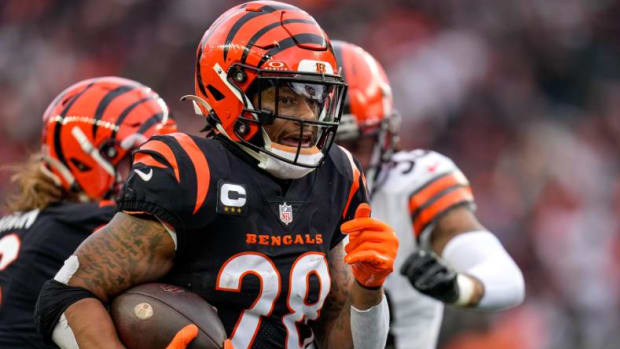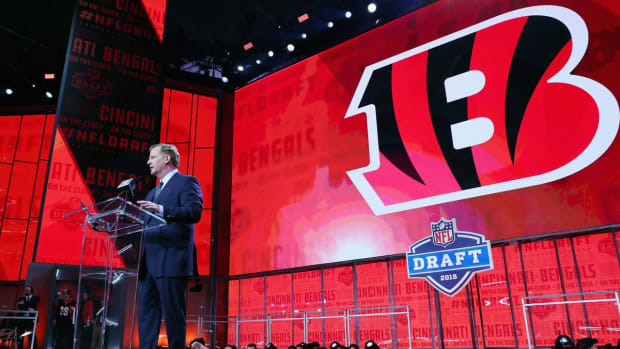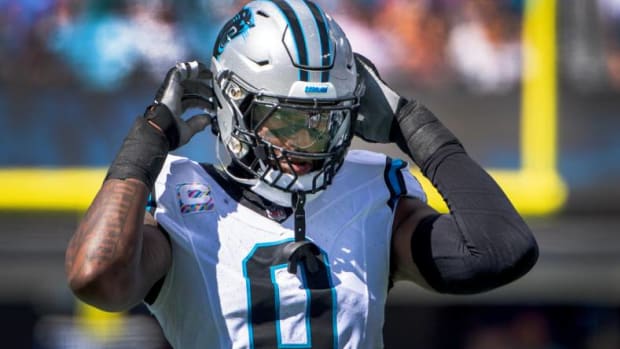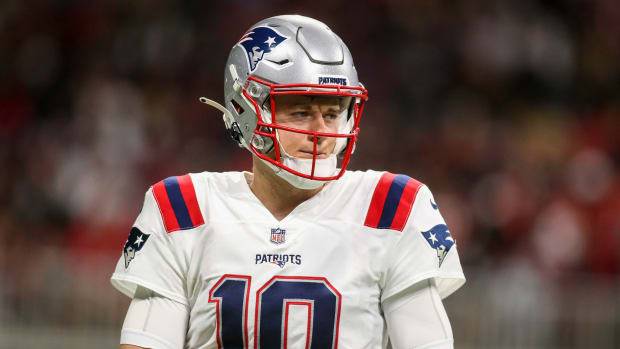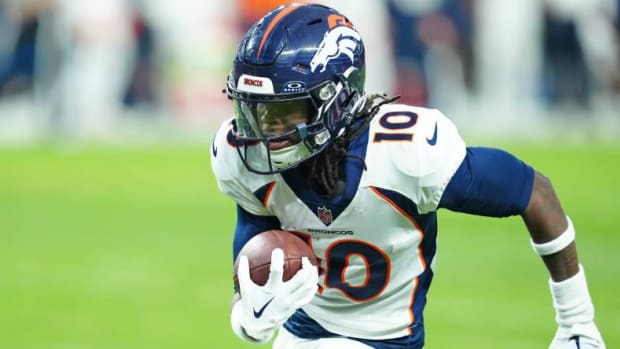How Aaron Rodgers Trade Impacts Jets and Packers 2023 NFL Draft Draft Strategy
Author: Eli Nachmany
One of the biggest pre-2023 NFL Draft dominoes has fallen. Earlier today, the Green Bay Packers agreed to trade quarterback Aaron Rodgers to the New York Jets. Adam Schefter reports that the Jets will receive Rodgers, along with picks 15 and 170 in this year’s draft. The Packers get picks 13, 42, and 207, along with a conditional second-round pick in 2024 that could become a first-rounder if Rodgers plays 65-percent of the possible snaps under center this season.
Basically, in exchange for Rodgers and for swapping a fifth-rounder for a sixth-rounder, the Packers move up two picks in the first round, gain a second-round pick in this year’s draft, and get at least a second-round pick next year as well.
The trade will have seismic implications for both teams’ respective approaches to the 2023 NFL Draft. The Jets are immediately a contender, and fans will expect them to approach the draft like they are competing for a Super Bowl title. Gang Green could use an offensive lineman, and if Ohio State tackle Paris Johnson Jr. falls down the board to No. 15, the Jets should give him strong consideration. Northwestern offensive lineman Peter Skoronski and Georgia tackle Broderick Jones will also garner consideration if available, while players like Tennessee tackle Darnell Wright and Ohio State tackle Dawand Jones could be on the team’s radar. The Jets have a fantastic stable of skill position players on offense at this point, so bolstering the offensive line could pay serious dividends (and, importantly, keep Rodgers upright).
Don’t forget—the Jets still have a second-rounder (No. 43); the one they just traded to Green Bay was the one that the team picked up in the Elijah Moore trade. The Jets might also seek to snap up a defensive lineman in either the first or second round; someone like Iowa’s Lukas Van Ness, Clemson’s Bryan Bresee, or USC’s Tuli Tuipulotu could make sense. This year’s EDGE class is stacked and the team will have its pick of a few high-quality EDGE rushers at No. 43.
As for the Packers, they are probably going to roll with Jordan Love at quarterback. While the team has a few holes, it might seek to prioritize getting Love a safety blanket at tight end—perhaps someone like Notre Dame’s Michael Mayer or Utah’s Dalton Kincaid. At the same time, given that the team is likely not headed to the Super Bowl this season, the Packers may just want to take the best player available (regardless of position) when the No. 13 pick rolls around. That could end up being one of the star EDGE rushers that analysts project to be available in the middle of the first round: Georgia’s Nolan Smith and Clemson’s Myles Murphy come to mind. The extra draft capital could encourage the team to pick for depth, too. On this front, filling out the secondary is not a bad idea.
The Jets and Packers have a lot to think about in the coming days. The teams have executed an earth-shattering trade with the 2023 NFL Draft quickly approaching. The trade will undoubtedly impact how both teams approach the draft.
With news like this, it's vital for your dynasty team to stay updated on the latest news around fantasy football. The Rodgers trade impacts every player on the Packers and Jets roster.
(I am grateful to Deven Jessa and Jonathan Sokol for influencing my thinking on the Jets and Packers’ respective draft strategies in light of the Rodgers trade. Deven and Jonathan have been students of mine this semester in a seminar I'm teaching at NYU about the NFL Draft; they represented the Jets and Packers, respectively, in a mock draft exercise that we did as a class.)
The Aaron Rodgers Trade Makes This Three-Pick Stretch a Defining Turning Point in the 2023 NFL Draft
The trade included an unusual set of draft compensation, creating an intriguing stretch in the middle of the first round.
Author: Josh Siegel
After many years of open complaining, numerous Pat McAfee show appearances, a darkness retreat, and a lot more Randall Cobb than anyone was prepared for, quarterback Aaron Rodgers has finally been traded to the Jets.
While much of the attention will surround how Rodgers will perform in New York, the structure of the trade is unusual.
The Packers valued getting extra draft capital, but instead of accumulating more mid-round picks, they chose to instead, swap first-round picks with the Jets.
This was a somewhat curious part of the trade, as extra draft capital would normally come in handy more than moving up just two spots in the middle of the first round, but the layout of the draft could explain why the Packers decided to do so.
It has been a pretty poorly kept secret that Green Bay could be interested in drafting a wide receiver, as they feel the need to immediately support Jordan Love, who only has one year and the fifth-year option left on his rookie contract.
The problem they were facing was that the New England Patriots, owners of the 14th pick in the upcoming first round, are also in need of a receiver to supercharge their offense.
The Packers insisting that they leapfrog the Patriots could be a signal that they are intent on bringing in a rookie receiver to pair with Jordan Love.
While this is generally considered to be a weaker group of first-round receivers, Ohio State’s Jaxon Smith-Njigba seems to have settled as this class’ top-ranked player at the position.
Smith-Njigba’s abilities after the catch would make him an intriguing fit in Green Bay, as Head Coach Matt LaFleur’s use of play–action and pre-snap motion can help maximize shifty route runners out of the slot in order to maximize their space in the open field.
A receiver getting taken before New England’s selection could complicate things for the Jets, who are in desperate need of a tackle, which is a position to which the Patriots could pivot if they are unable to select a receiver.
However, the Patriots could also follow an old pastime of Bill Belichick’s and trade back, leaving hope that Ohio State’s Paris Johnson Jr. or even Northwestern’s Peter Skoronski could fall to the 15th pick.
The Jets could also be in the market to trade back in order to get back some of the picks they lost in acquiring Rodgers.
Regardless, that three-pick stretch from 13-15 could prove to be a pivotal turning point for all three franchises.





